Common Name(s): Andiroba, crabwood
Scientific Name: Carapa guianensis
Distribution: Central and South America
Tree Size: 80-100 ft (30-35 m) tall,
2-3 ft (.6-1 m) trunk diameter
Average Dried Weight: 41.2 lbs/ft3 (660 kg/m3)
Specific Gravity (Basic, 12% MC): 0.56, 0.66
Janka Hardness: 1,220 lbf (5,430 N)
Modulus of Rupture: 15,580 lbf/in2 (107.4 MPa)
Elastic Modulus: 1,965,000 lbf/in2 (13.55 GPa)
Crushing Strength: 8,220 lbf/in2 (56.7 MPa)
Shrinkage: Radial: 3.1%, Tangential: 7.6%,
Volumetric: 10.4%, T/R Ratio: 1.5
Color/Appearance: Heartwood tends to be a pale reddish brown, darkening with age to a medium to dark brown. Sapwood is a lighter pink or pale brown, not always demarcated from heartwood. Quartersawn surfaces with interlocked grain can exhibit a ribbon-like appearance similar to sapele or African mahogany.
Grain/Texture: Andiroba has a uniform, fine to medium texture with a medium natural luster and a straight grain, though the grain is sometimes wavy or interlocked.
Rot Resistance: Andiroba is considered moderately durable to very durable regarding decay resistance, though it can be susceptible to insect attack. Weathering characteristics are similar to Honduran mahogany.
Workability: Overall easy to work with both hand and machine tools. Sometimes pieces with interlocked grain will cause tearout during surfacing operations. Andiroba also has a moderate blunting effect on tool cutters. Andiroba has an increased risk of warping and other drying defects, partially because of its high T/R ratio (2.5). Andiroba glues, finishes, and turns well.
Odor: No characteristic odor.
Allergies/Toxicity: Although severe reactions are quite uncommon, andiroba has been reported to cause eye and skin irritation, as well as sneezing. See the articles Wood Allergies and Toxicity and Wood Dust Safety for more information.
Pricing/Availability: Not as commonly available in North America as other more mainstream commercial hardwoods, andiroba makes an economical mahogany substitute where it is available. Andiroba is used in both lumber and veneer form.
Sustainability: Andiroba is not listed in the CITES Appendices, and most Carapa species are widespread across Central and South America, listed as being of least concern by the IUCN. However, a single species from Ecuador, Carapa megistocarpa, is listed as endangered due to a population reduction of over 50% in the past three generations, caused by a decline in its natural range.
Common Uses: Veneer, plywood, cabinetry, furniture, flooring, interior trim, and turned objects.
Comments: Frequently touted as a substitute for mahogany—sometimes even being sold as royal mahogany to take advantage of the established mahogany name—andiroba tends to be a bit blander in appearance and less stable than genuine mahogany (though once the initial drying process is complete, andiroba remains fairly stable). However, the wood is in the Meliaceae (mahogany) family, so comparisons between the two woods aren’t wholly unfounded.
The name andiroba is derived from an indigenous Amazon language—the Nheengatu language—from the words nhandi rob, meaning bitter oil. The extracted oil from the trees’ seeds have been used for a variety of purposes in traditional indigenous medicine.[1]Araujo-Lima, C. F., Fernandes, A. S., Gomes, E. M., Oliveira, L. L., Macedo, A. F., Antoniassi, R., … & Felzenszwalb, I. (2018). Antioxidant activity and genotoxic assessment of crabwood … Continue reading
Although Carapa guianensis is the primary commercial species, there are a handful of other Central and South American species that are also sold interchangeably as andiroba. Peripheral species include C. megistocarpa, C. nicaraguensis and C. surinamensis.
Images: Drag the slider up/down to toggle between raw and finished wood.
Do you have images of projects made from this wood species? You can submit them to me here.
Identification: See the article on Hardwood Anatomy for definitions of endgrain features.
Porosity: diffuse porous
Arrangement: solitary and radial multiples of two to four; sometimes predominantly in radial multiples
Vessels: large to very large, few to very few; dark brown deposits sometimes present
Parenchyma: vasicentric, banded (marginal)
Rays: narrow to medium width; normal spacing
Lookalikes/Substitutes: Although andiroba typically lacks the visual interest and grain figuring of some pieces of genuine mahogany (Swietenia macrophylla), both woods are from the Meliaceae family, and anatomically, andiroba can be very difficult to distinguish from true mahogany. Swietenia species tend to have stronger, more contrasted and consistent marginal parenchyma bands, while Carapa species may have faded or non-continuous parenchyma bands. Also, Swietenia species have storied rays which can produce ripple marks on flatsawn surfaces—though this feature isn’t always present on all samples, so its presence would point to Swietenia, while its absence would still be ambiguous.
Notes: None.
Related Content:
References[+]
| ↑1 | Araujo-Lima, C. F., Fernandes, A. S., Gomes, E. M., Oliveira, L. L., Macedo, A. F., Antoniassi, R., … & Felzenszwalb, I. (2018). Antioxidant activity and genotoxic assessment of crabwood (andiroba, Carapa guianensis Aublet) seed oils. Oxidative Medicine and Cellular Longevity, 2018. |
|---|

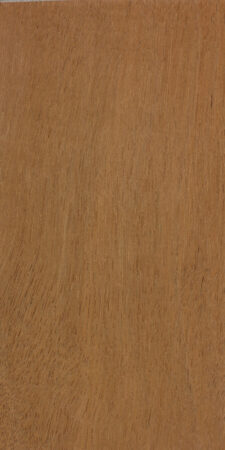

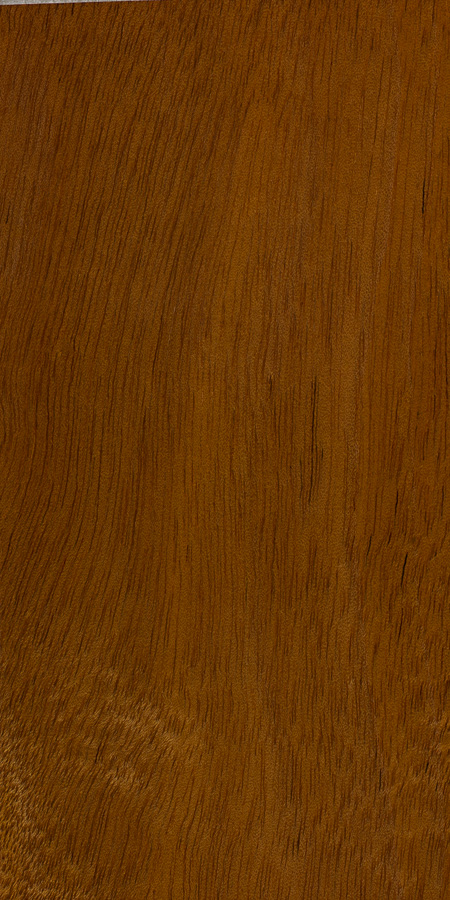
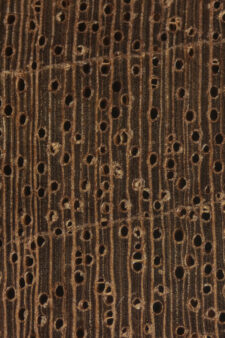



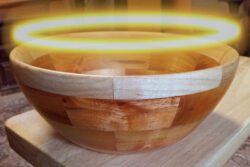

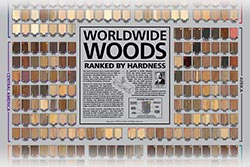
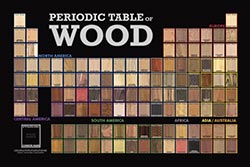




Which varnish is recommended to highlight the colour of the wood?
What brand and colour in water based stain would u recommend to give that light reddish natural look?
What I would like to know in both cases of the rot; had the windows and door been well preserved and coated with a finish like Sadolin or Sika and of course been maintained?
Five years ago I built a house in St Croix, USVI. All of the doors and
windows were manufactured with Andiroba. These windows and doors began
developing mushrooms about 2 years after installation. We kept cleaning
off the mushrooms and have now discovered that they have begus to rot
from the inside out meaning the center of the rails. By the time you
discover it the center is already pulpy. Do you have a reason why this
could be happening?
I also have Andiroba doors and windows, actually from the same manufacturer as Rob. We’ve had these in about 5 years, with the same issues as Rob mentioned. The problem seems to be direct-moisture related and thus far, four windows and one door out of a 16 windows and 11 doors have mushrooms and rot, from rain exposure. All the inside doors and doors with plenty of protection from gallery are still perfect. Mushrooms and rot started in the first year. Thus, I would say Andiroba is not perfectly suitable. In another house, we had Spanish Cedar, still in fine… Read more »
Rob, Andiroba is a considered to be a precious & exotic wood specie. It is very workable and durable when used for interiors. However, all wood species are susceptible to fungus, rot & decay if misused. I’m from Nicaragua and I’d say that 70% to 80% of the doors are currently being made from Andiroba (before it was all Spanish Cedar). I would guess tha in St. Croix has a very high humidity . If the wood is constantly being hit by rain (and sun for that matter) the perfect setting is created for bacteria and fungus Growth. For any… Read more »
Five years ago I built a house in St Croix, USVI. All of the doors and windows were manufactured with Andiroba. These windows and doors began developing mushrooms about 2 years after installation. We kept cleaning off the mushrooms and have now discovered that they have begus to rot from the inside out meaning the center of the rails. By the time you discover it the center is already pulpy. Do you have a reason why this could be happening?